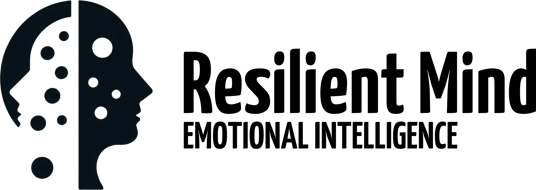Taming the Inner Critic: Navigating Negative Patterns
We all have that voice inside our head, a constant commentator on our thoughts, actions, and worth. Often, this "inner voice" can be critical, judgmental, and steeped in negative patterns that hinder our emotional well-being and relationships. But where does this inner voice come from, and more importantly, how can we learn to control it and foster more positive self-talk?
4/12/20253 min read


According to Alain de Botton, this inner voice is essentially an "outer voice that got internalized". We are porous beings, and the way we've been spoken to throughout our lives becomes the way we speak to ourselves. Just as we unconsciously learn the complexities of language in our early years, we also absorb an "invisible syntax of our emotional lives", learning what to expect in various social and emotional situations. This learned syntax, though often operating beneath our conscious awareness, profoundly shapes our inner dialogue.
Attempting to change these ingrained patterns is not a quick fix. De Botton aptly compares it to learning a new language. Just as fluency in Italian requires consistent effort beyond reading a book or attending a few classes, emotional improvement demands patience and persistence. We need to be modest in our expectations and understand that meaningful change takes time and consistent effort.
The first step towards taming the inner critic is identifying it. This voice doesn't announce itself; it's often woven into the fabric of our thoughts. Sentence completion exercises can be helpful in bringing these underlying beliefs to the surface. Prompts like "Men are...", "Women are...", "Life is...", or "I am..." can reveal surprising negative associations that fuel our inner voice. Similarly, story completion exercises, such as "When I meet someone...", can uncover negative expectations carried forward from past experiences.
It's crucial to recognize that this negative inner voice may not represent our authentic self. Much of what we internalize comes from societal norms, cultural expectations, and past traumas. The journey of life involves "separating out a little bit" what has been imposed upon us from what truly reflects our values and considered choices. This process of self-authorship involves editing and sifting through these internalized voices.
Language plays a vital role in understanding and managing our emotions. The more words we have to describe what we feel, the better we can attend to those feelings. Defining our emotions, even the painful ones, can make them more bearable. Journaling, for instance, helps translate ephemeral feelings into concrete words, taming and containing difficult emotions.
While connecting with our emotions is essential, there are times when taking distance from their full force is also a healthy defense mechanism. Our minds sometimes shield us from being overwhelmed. However, chronic disassociation, or stopping ourselves from feeling difficult emotions, can be detrimental in the long run. The goal is to associate more and disassociate less.
Negative patterns often serve as defense mechanisms developed to cope with challenging past experiences. Understanding the origins of these patterns, asking "when did the current behavior which now doesn't seem to make sense, when did it once make sense?", can foster self-compassion and pave the way for change. We should thank our younger selves for developing these coping strategies but recognize when they no longer serve us.
Intellectualizing our emotions can sometimes be a coping mechanism to distance ourselves from actually feeling them. True self-awareness requires emotional engagement, not just cognitive understanding. Meditation and reflection, allowing experiences to assume their proper shape, can help bridge this gap.
Therapy can be invaluable in identifying and understanding deeply ingrained patterns. A therapist can offer a fresh perspective, pointing out "doors you never even knew existed" in your internal landscape. This process can be humbling but ultimately liberating.
Ultimately, controlling the inner voice and changing negative patterns is a journey of awareness, self-compassion, and consistent effort. It's about recognizing the origins of our inner critic, understanding its impact, and consciously choosing to cultivate a more friendly and supportive internal dialogue. This journey may be long, but every step towards understanding ourselves better is a significant milestone. Remember to be patient with yourself, like learning a new language, and celebrate the progress you make along the way.
